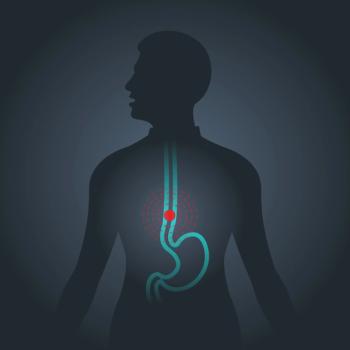
Right-Sided Metastatic CRC Benefits From Adding SIRT to Chemotherapy
Patients with colorectal cancer that has metastasized to the liver derive a significant benefit from selective internal radiation therapy (SIRT) combined with chemotherapy if their primary tumor is a right-sided tumor, but not if it is a left-sided primary tumor.
Patients with colorectal cancer (CRC) that has metastasized to the liver derive a significant benefit from selective internal radiation therapy (SIRT) combined with chemotherapy if their primary tumor is a right-sided primary tumor (RSP), but not if it is a left-sided primary (LSP), according to a new study.
“These findings are good news for patients with right-sided primary tumors, who have a much worse prognosis and fewer treatment options than patients with left-sided tumors,” said Guy van Hazel, MD, of the University of Western Australia in Perth, in a
The study (abstract
In the full cohort, the addition of SIRT to chemotherapy had no significant impact on survival outcomes. The median progression-free survival was 11.1 months with SIRT, and 10.6 months without it (P = .22); the median overall survival in the two groups was 24.3 months and 24.6 months, respectively (P = .84).
The addition of SIRT did have an effect, however, on those with an RSP. In those patients, the median overall survival was 22 months, compared with 17.1 months without SIRT, for a hazard ratio of 0.64 (95% CI, 0.46–0.89; P = .007). In patients with an LSP, the median overall survival was 24.6 months with SIRT and 25.6 months without, for an HR of 1.12 (95% CI, 0.92–1.36; P = .279). The location by treatment interaction was “highly significant” (P = .002). There was a trend toward improved progression-free survival in RSP patients as well, but this did not reach significance, and there was no difference between RSP and LSP patients with regard to the incidence of grade 3 or higher adverse events.
Two ESMO spokespersons, Dirk Arnold, MD, PhD, from CUF de Oncologia in Lisbon, Portugal, and Eric Van Cutsem, MD, PhD, from University Hospitals Leuven in Belgium, commented on the study. “It remains to be confirmed whether these results mean that right-sided tumors are more sensitive to this kind of radiotherapy-or whether this is simply related to the fact that the molecular characteristics of right-sided tumors allow less treatment options because they have more mutations,” they said, in the press release. “Additionally the well-known worse prognosis of right-sided tumors increases the relative importance of a non-systemic treatment option. More data on the molecular factors determining these results are warranted.”
Newsletter
Stay up to date on recent advances in the multidisciplinary approach to cancer.




















































































